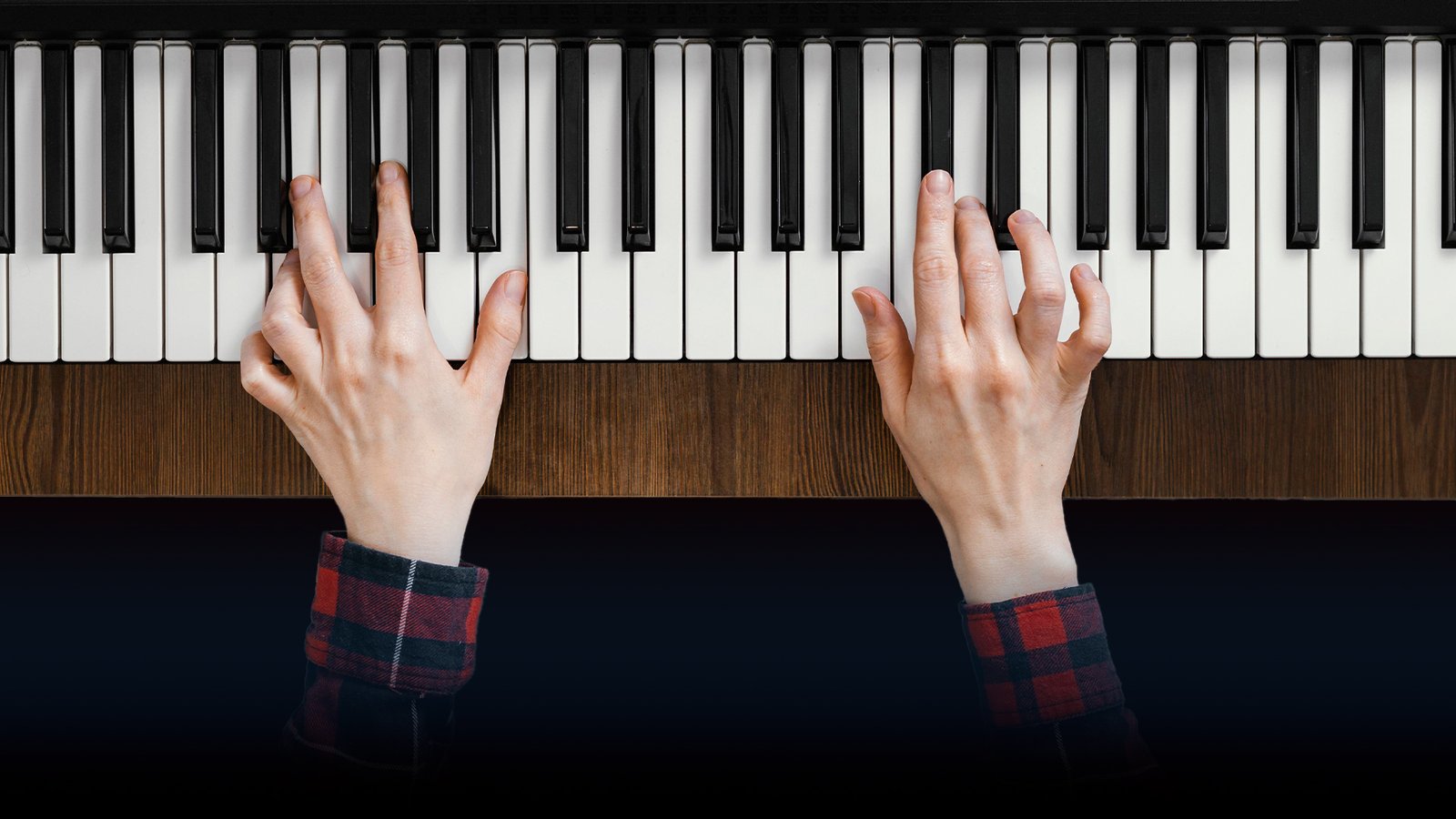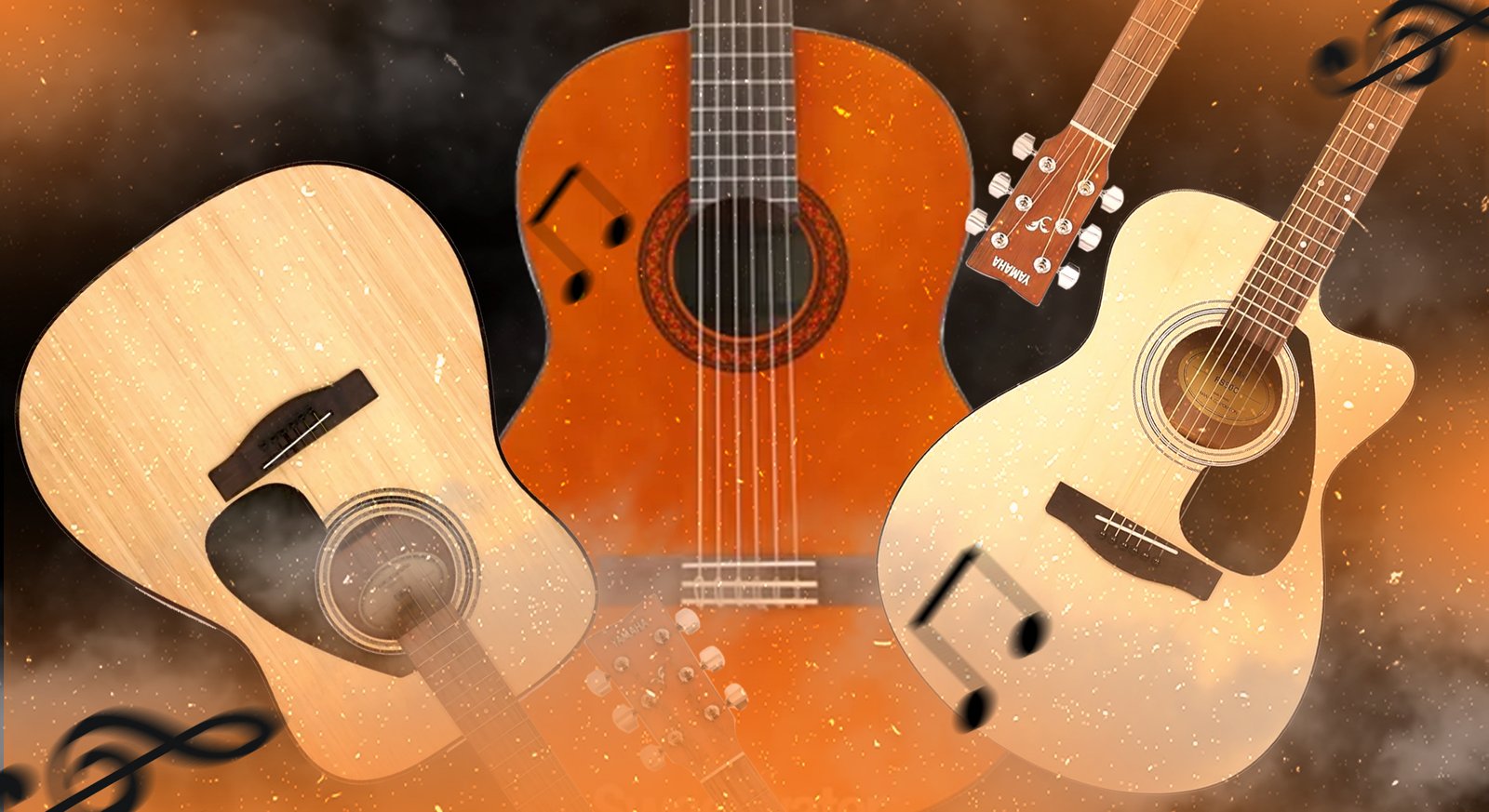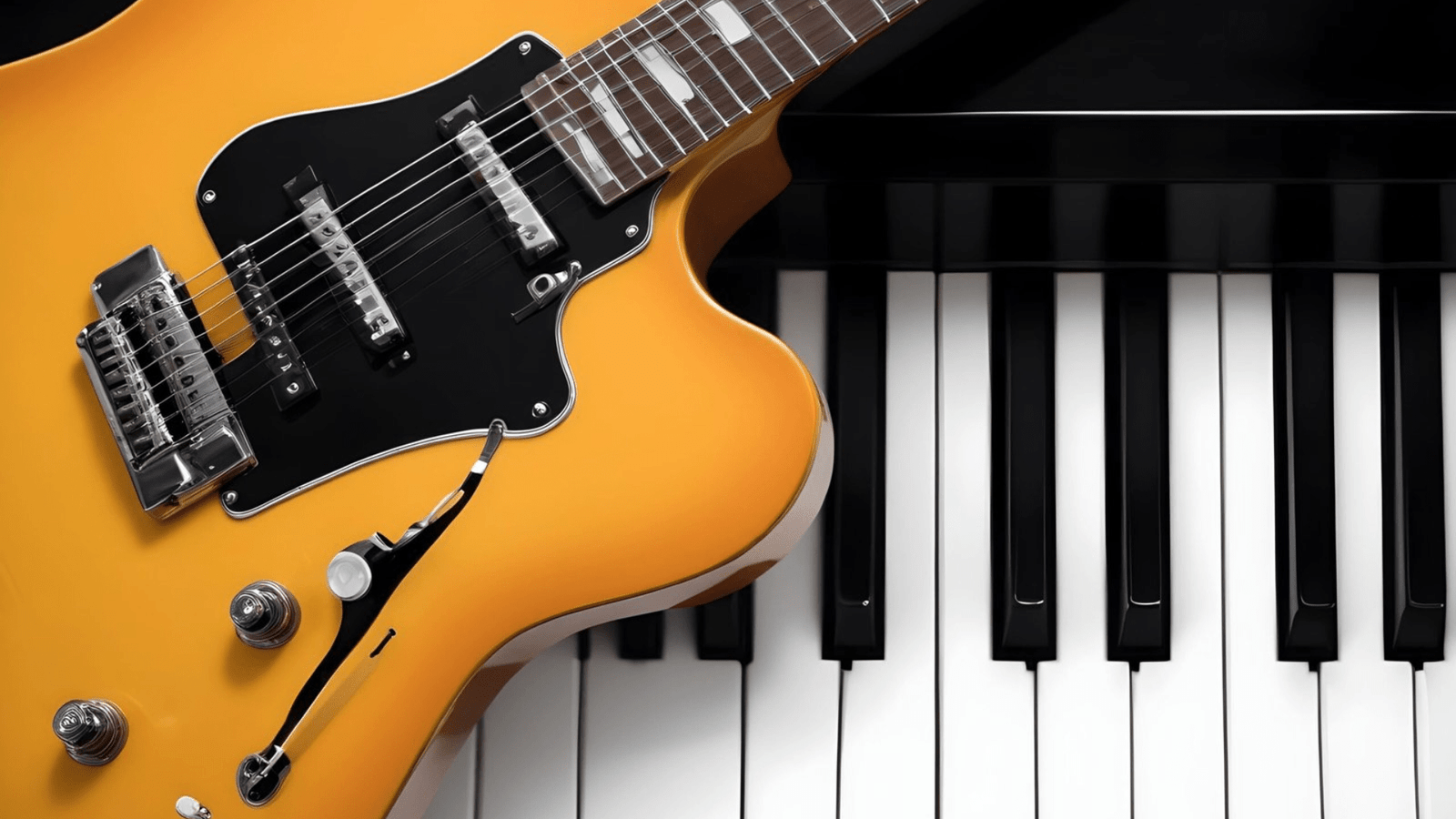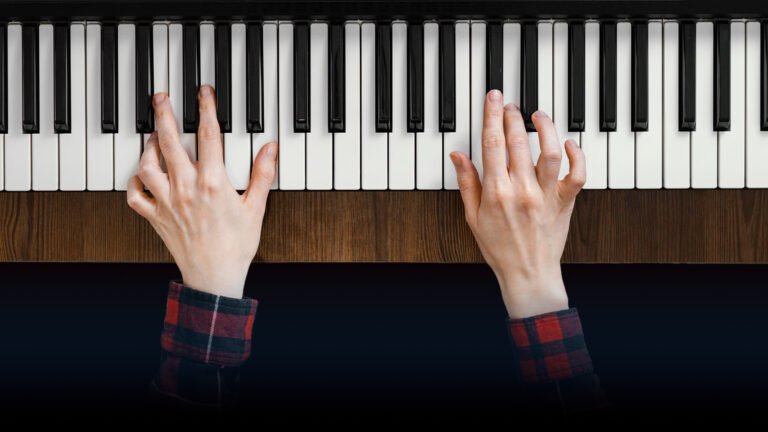Guitars are one of the most melodious instruments around, and they are made up of several parts that work together to create those awesome sounds we all appreciate. Learning about the different parts of a guitar will not only make you better at playing this classic instrument but will also deepen your appreciation for it.
Let’s break it down into simple terms so that even if you are new to the instrument or a beginner, you will get a clear picture. Let’s start by learning about the common parts of all guitars and their functions, and then learn the different parts of acoustic and electric guitars:

Headstock: The Guitar’s Command Center
Location: The headstock is located at the very top of the Guitar.
Function: This is where you’ll find the tuning pegs or tuners. The headstock’s main job is to hold the strings in place and allow you to tune the guitar by tightening or loosening the strings using the tuners.

The headstock is the gateway to every note you play. It controls the pitch of each string, making sure your guitar sounds just right. Whether you’re tuning up or down, this small yet vital part keeps your music in harmony.
Tuning Pegs: The Pitch Adjusters
Location: Found on the headstock, these small knobs are positioned in a row or a three-on-each-side layout.
Function: Tuners adjust the tension of each string, which alters the pitch. When you turn a tuning peg, it tightens or loosens the string, allowing you to fine-tune the sound.
They let you control the pitch, ensuring that each string vibrates at the right frequency. With a simple twist, you can take your music from flat to sharp, or anywhere in between.
Nut: The String Separator
Location: The nut is located where the headstock meets the fretboard, just before the first fret.
Function: This small piece of material (often plastic, bone, or metal) holds the strings in position and guides them toward the tuners.
This little component plays a big role in keeping your strings in line and your sound clear.
Neck: The Bridge Between Sound and Expression
Location: The neck extends from the body of the guitar to the headstock, holding the fretboard, frets, and truss rod.
Function: The neck supports the fretboard and is where you place your fingers to play notes. It is designed for comfort and playability, allowing your hand to move smoothly up and down the fretboard.
The neck can be made of different types of wood and can be of various shapes and sizes, affecting how the guitar feels and sounds. A comfortable neck is key to playing smoothly and easily.
Truss Rod: The Neck Stabilizer
Location: Inside the neck, accessible through a small cover at the headstock or body.
Function: This adjustable rod helps to keep the neck straight and can be tightened or loosened to correct any curvature. It’s a crucial component for keeping the guitar in optimal playing condition.
It keeps the neck stable, preventing it from warping due to string tension or changes in temperature and humidity. Adjusting the truss rod can help maintain the guitar’s sound quality.
Fretboard (or Fingerboard): The Musical Highway
Location: The fretboard runs along the neck of the guitar, directly beneath the strings.
Function: The fretboard is where you press the strings to create different notes. It’s marked with fret (metal strips) that divide the neck into different pitches.
It’s the playing surface of the guitar, allowing you to press down on the strings to produce different notes. The frets help you play precise pitches, making it easy to move up and down the neck.
Strings: The voice of Guitar
Location: Strings run from the tuners on the headstock, across the nut, down the neck over the fretboard, and finally across the body to the bridge.
Function: Strings are what you play to create sound. When you pluck or strum them, they vibrate and produce notes. The thickness of the string affects the pitch, with thicker strings producing lower notes and thinner strings producing higher ones.
The type of strings you use can greatly affect your tone, from bright and crisp to warm and mellow.
The Frets: The Note Markers
Location: Embedded along the fretboard, frets are the metal strips that divide the guitar neck into sections.
Function: Frets allow you to change the pitch of a string when pressed down. Each fret represents a half-step in musical pitch, letting you play different notes by moving up and down the fretboard.
They segment the neck into precise intervals, helping you play different notes. Each time you press down behind a fret, you change the string’s pitch, allowing you to create melodies and chords.
Inlays: The Roadmap to Fretboard
Location: Inlays are the small markers embedded in the fretboard.
Function: Inlays serve as visual guides to help you manage the fretboard. They make it easier to find your place on the neck, especially when playing complex pieces.
They help you find your way as you move up and down the neck, ensuring that you hit the right notes at the right time. Moreover, they add a bit of visual flair to your guitar.
Strap Button: The Guitar Holder
Location: Small buttons located on the body of the guitar, usually one at the bottom and one at the top near the neck.
Purpose: Strap buttons allow you to attach a guitar strap, making it easier to hold the guitar while standing. This is especially important for live performances, ensuring the guitar stays securely in place while you play.
Body: The Heart of Guitar
Location: The body is the large, hollow, or solid part of the guitar that is attached to the neck.
Function: The body is the main part of the guitar you see when someone plays. It’s where the sound resonates, giving the guitar its tone and volume.
The guitar body is usually made of wood and comes in different shapes and sizes. The body is hollow in acoustic guitars, which helps create a rich, resonant sound. The body is solid in electric guitars, and the sound is amplified through amplifiers.
Bridge: The String Anchor
Location: The bridge is located on the lower part of the guitar’s body, directly below the soundhole on an acoustic guitar or under the strings on an electric guitar.
Function: The bridge is responsible for transferring the vibrations from the strings into the guitar body, allowing the sound to resonate.
The design and material of the bridge can have a big impact on your guitar’s tone and the sustain of the instrument.
Saddle: The String Height Regulator
Location: Located on the bridge, where the strings rest.
Purpose: The saddle is the part of the bridge where the strings make contact. It helps maintain the correct string height and intonation, which is essential for accurate tuning and comfortable playing. The saddle plays a crucial role in determining the guitar’s action (string height) and overall sound.
Acoustic Guitar Body Parts
Sound Hole: The Sound Producer
Location: Centrally located on the body of an acoustic guitar.
Function: The sound hole allows sound waves to escape from the guitar’s body, naturally amplifying the sound produced by the strings.
It is the primary source of the acoustic guitar’s volume and tone, making it a vital feature for projecting the guitar’s sound.
Rosette: Sound Hole’s Elegant Protector
Location: Surrounding the sound hole on an acoustic guitar.
Purpose: The rosette is a decorative ring around the sound hole that also serves a protective function. It prevents the wood around the sound hole from cracking or wearing out.
Pickguard: The Protector
Location: Found just below the strings on the body of the guitar, especially near the sound hole on acoustic guitars.
Function: The pickguard protects the guitar’s body from scratches and dings caused by strumming and picking. It also adds a bit of flair to your guitar’s appearance.
Electric Guitar Body Parts
Pickups: The Sound Magnifiers
Location: Located on the body, under the strings.
Purpose: Pickups are small electronic devices that “pick up” the vibrations of the strings and turn them into an electric signal. This signal is then sent to an amplifier, which makes the sound louder. Pickups are what give electric guitars their powerful sound.
Pickup Switch Selector: The Tone Controller
Location: Near the pickups on the guitar body.
Purpose: The pickup switch selector allows you to choose which pickup(s) to activate, altering the guitar’s tone. This gives you the flexibility to change your sound from bright and sharp to warm and mellow, depending on the music style you’re playing.
Whammy Bar or Tremolo Bar: The Pitch Bender
Location: Attached to the bridge of electric guitars.
Purpose: The whammy bar, or tremolo bar, allows you to temporarily change the pitch of the strings by altering the tension. This creates a vibrato effect, adding expressiveness to your playing.
It’s a popular feature in rock and metal music for creating dramatic sound effects.
Control Knobs: The Sound Adjusters
Location: On the body, usually near the pickups.
Function: Control knobs adjust the volume and tone of the guitar. They allow you to fine-tune the sound, from bright and sharp to warm and mellow. Consider them as the remote controls for your guitar’s sound.
Jack Input: The Sound Output Connector
Location: On the side or front of the electric guitar’s body.
Purpose: The jack input is where you plug in your guitar cable to connect it to an amplifier or other audio equipment. It is the gateway through which your guitar’s sound travels to the outside world, allowing you to amplify and modify it as you play.
Conclusion
Learning how your instrument works can deepen your connection to your music. Every part has its own function in producing the music we cherish, from the headstock that ensures the strings stay in tune to the body that resonates the sound. Whether you are an acoustic melody lover or passionate about electrifying jamming, diving into your instrument’s structure can make your playing even more enjoyable.
At Gretex, we believe that every music enthusiast should have access to high-quality instruments and the knowledge to use them effectively. If you are looking to explore more about guitars or need help finding the perfect one, feel free to reach out at +91 9330730002 or browse our online store and strum your way to greatness!








